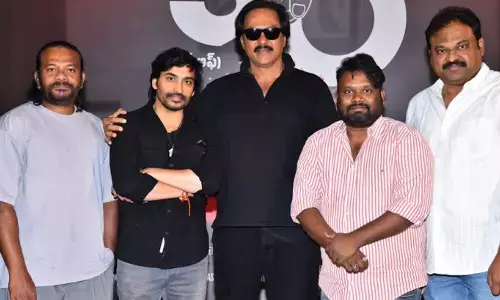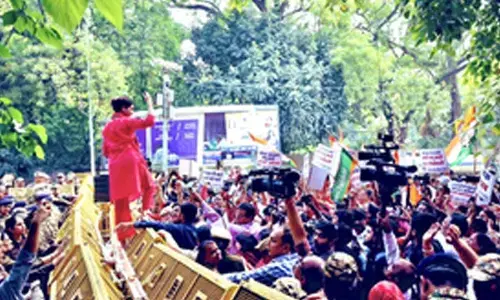App-based cab services-ride of a life time or a bumpy road ahead?

There was a time when we were held ransom by all and the sundry. The most famous of them were the auto and cab drivers who used to fleece the hapless travelers. An Omani once told me in Muscat that he was charged 10 Omani Rials (around 1700 rupees) in the early 90s for auto trip from Begumpet airport to a small lodge in Nampally.
There was a time when we were held ransom by all and the sundry. The most famous of them were the auto and cab drivers who used to fleece the hapless travelers. An Omani once told me in Muscat that he was charged 10 Omani Rials (around 1700 rupees) in the early 90s for an auto trip from Begumpet airport to a small lodge in Nampally.
The smart auto driver spoke in Arabic and duped the innocent Omani who thought that it was a good bargain to pay 10 Omani Rials for the auto journey! At that time typical charge for an auto would be around 50 – 60 rupees.
We experienced a wave of car rental companies like Meeru, Yellow cabs, Dot cabs, Green cabsand others in the early 2000s. Initially they were popular but their popularity proved to be their curse. These cab services were mostly driven on an obsolete technology platform whose back end wasa call centre.
Customers had to phone these call centres to book the cabs and the process was cumbersome and error prone. Cancelations were tricky and many cases the cabs find not report in time and there was outage of service. The charges were mostly fixed and out of bound for most of the travellers.
Worst of all there was no tracking available and its near impossible to do any booking on an impulse. Even cab booking had to be planned and most of these were for services that were booked for a particular occasion like an airport drop and packages for 40 kilometres and for a 4 hour duration.
Cab Drivers were very polite but had no motivation to be prompt and there were frequent cancellations from the drivers’ end citing many real and imaginary problems. Customers rarely used these cabs for point to point usage and for normal city travel. And the customer care centres could not cater if multiple request were made for cabs.
Thus a vacuum existed as far as economic cab services for city travel was concerned. The vacuum was dramatically filled by Ola and Uber the technology based companies that used the latest technologyto attract and woo the customers. Both the companieshave invested very heavily in technology and used the aggregator model to expand and scale up operations.
The aggregatormodel works on the concept that the aggregating company is excellent in marketing and in creating the buzz. Interested customers would visit the company’s website or download the aggregator app on to their mobile.
The aggregator would solicit business and then the business is offloaded to the companies/individuals who have signedup with the aggregator. Thesecompanies that have signed up will get the business andthey would have to pay a small margin for the services rendered to the aggregator. The sum might be small and might look low but when the scale of operations is huge these small margins can add up to a massive amount for the aggregator.
Amazon, Flip Kart, Snapdeal, Ola and Uber are masters ataggregation. Ola and Uber own a mere fraction of the thousands of cabs that operate under their brand name. Most of the cab drivers are independent cab drivers and pay a part of their earningsto be under the Ola and Uber umbrella. They get the business for free but have to pay a small royalty.
It is a great business model for all the concerned. Commission charged by Uber/Ola cabs from the taxi owners varies from 10-15 percent. Some reports suggest that it is about 20%.
Presently both Ola and Uber are not making any profit and are bleeding heavily. But the business model right now is looking at business expansion and it has to be said that they have succeeded on achieving that objective.
The strategy is to of capture the market and tap the potential of a large number of Indian commuters by offering different services like local transfers, outstation travel and full day/half day rentals thereby catering to the varied needs of the customers. OLA and Uber want to create an image of a hassle fee enjoyable intra-city travel. To attract more and more customers, they provide discounts/ referrals/ coupons etc.
Ola and Uber have succeeded in their attempt to be the best service providers for hassle free city travel. Their app service is so additively compulsive that even customers having non smart phone have switched on to smart phones to avail the ever popular Ola and Uber services.
The business model of Ola Cabs also works by getting money from grocery deliveries, peak time peak charges popularly called as surge etc. OLA Cab provides different services like Ola share, Micro, Mini, Prime, Auto, Outstation, shuttle and Luxury depending on the needs of the customers and charges fares accordingly. In New Delhi Ola eve providesE-rick (Rickshaw).
Uber too has not limited itself to a particular segment of cars or to a particular segment of people. There is Uber pool, Uber X, Uber Go, Uber X, Uber XL and Uber hire.
Unique services launched by Ola and Uber
Share: A share is a concept just like a sharing auto. Travellers who request this service will be provided a car but they might have to share the same with other passengers. Share works out to be very cheap but travellers who have time on their side only shouldavail this service as the cab driver may stop and pick up other customers on the route. There might be small detours off the main road.
Share on the road concept: A new service that has been started. The car would travel on a fixed route and the customers have to come on that fixed route and take the cab. It works just like any bus service.
Travel as you like for the first 8 kilometres or sometimeseven up to 10 kilometres:Customers pay a fixed amount of Rs 74/- for the first 8 kilometres and regular charges apply for every kilometre after the first eight kilometres.
Ola Passes:Customers have to buy Ola pass at Rs 159 that will allow 10 rides each at Rs 40 for the first eight kilometres, Rs 199 pass that will allow 10 rides each at Rs 70 for the first fifteen kilometres. Thesepassesare valid for a month and are a boon for customers who have to travel every day.
Uber Moto: A new innovative concept soon to be launched in Hyderabad. Uber Moto will be motorcycle cab ride service that will be offered in Hyderabad. The motorcycle would operate on the same model as a cab and the pillion rider would be provided with a helmet. The rates would be Rs 25 for the first five kilometres and Rs 5 for every subsequent kilometre.
How the app based cab service works:A user tapson his smartphone and books a cab at his location.The driver has the option to accept or reject a ride.If driver accepts the ride, driver details are sent to the customer along with Expected time of Arrival (ETA).The customer can track the driver as he arrives to his location.
The driver can also track the exact location of the customer and reach his location.Customers have the choice of paying through Ola money or through mobile wallets like the paytm. The money is automatically deducted once the ride has ended. Customers have the option of paying the fare in cash too.
Both Ola and Uber have a very unique system of asking the customer to rate the driver on a 1-5 scale on the services rendered. Higher the rating by the customer, higher are the incentives that are given to the driver. Similarly, the driver also rates the customeron a 1-5 scale.
The higher the ratings that the customer gets the better it is for him. A high rated customer gets a highly rated driver, better cars and faster pickups. Thy are not chargedsurge prices and are offered discounts and coupons as appreciation for the given business.
Ola and Uber also give incentives for the drivers. Ola gives the drivers commission based on the number of trips. Typically, Ola drivers have to do 14 trips aday to be eligible for the incentives and Uber gives incentives based on the total fare, for example if a cab driver can do business worth Rs 2,200/- per day he would get an incentive of Rs 3,600/-.
There are complex equations that come into the picture but most Ola and Uber drivers make decent money and it is not uncommon to hear drivers say that they have made about 50,000 or even 60,000 rupees in a month.
Right now the ride appears to be smooth, but there are pitfalls ahead. The customersare delighted as the fares right now are even cheaper than auto fares. The drivers are courteous as their main income comes from incentive and not from the customer fare. The aggregators right now want to consolidate.
It would be very interesting to note what would happen once Ola and Uber tighten their belts and increase the fares and remove the incentives given to the cab drivers. Would the cab ride become bumpy? watch this space for more action as it happens.




















